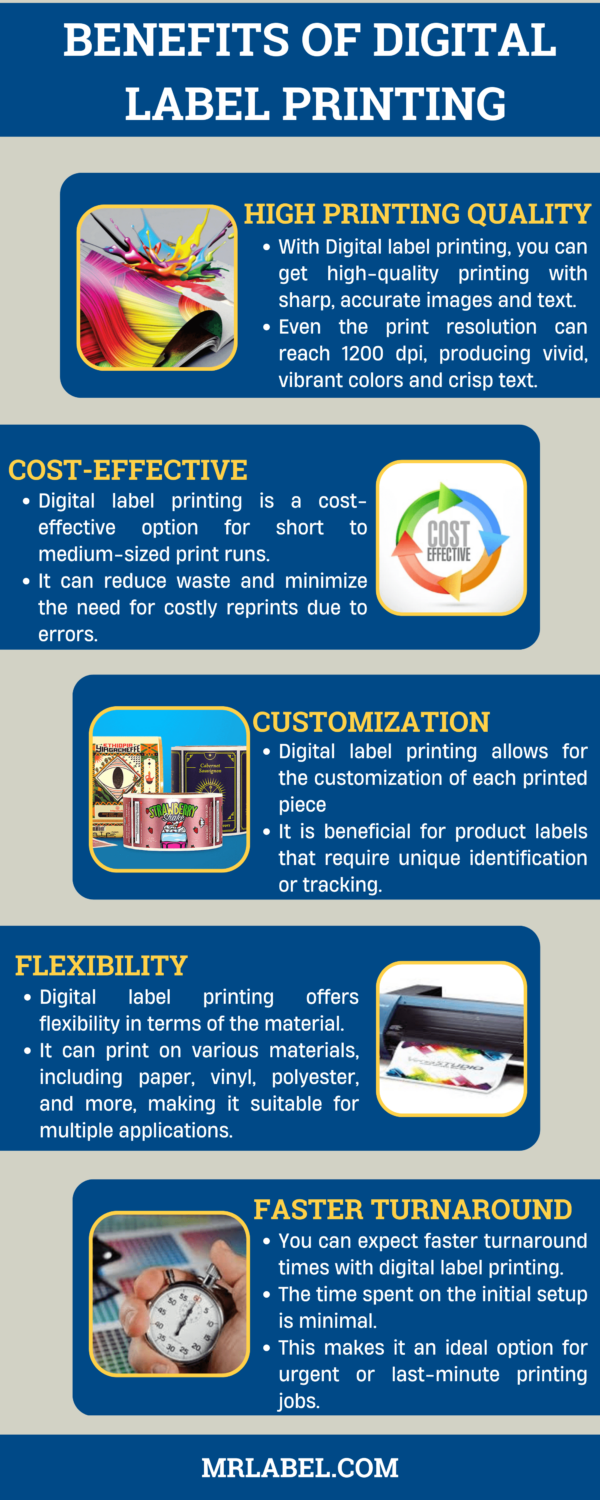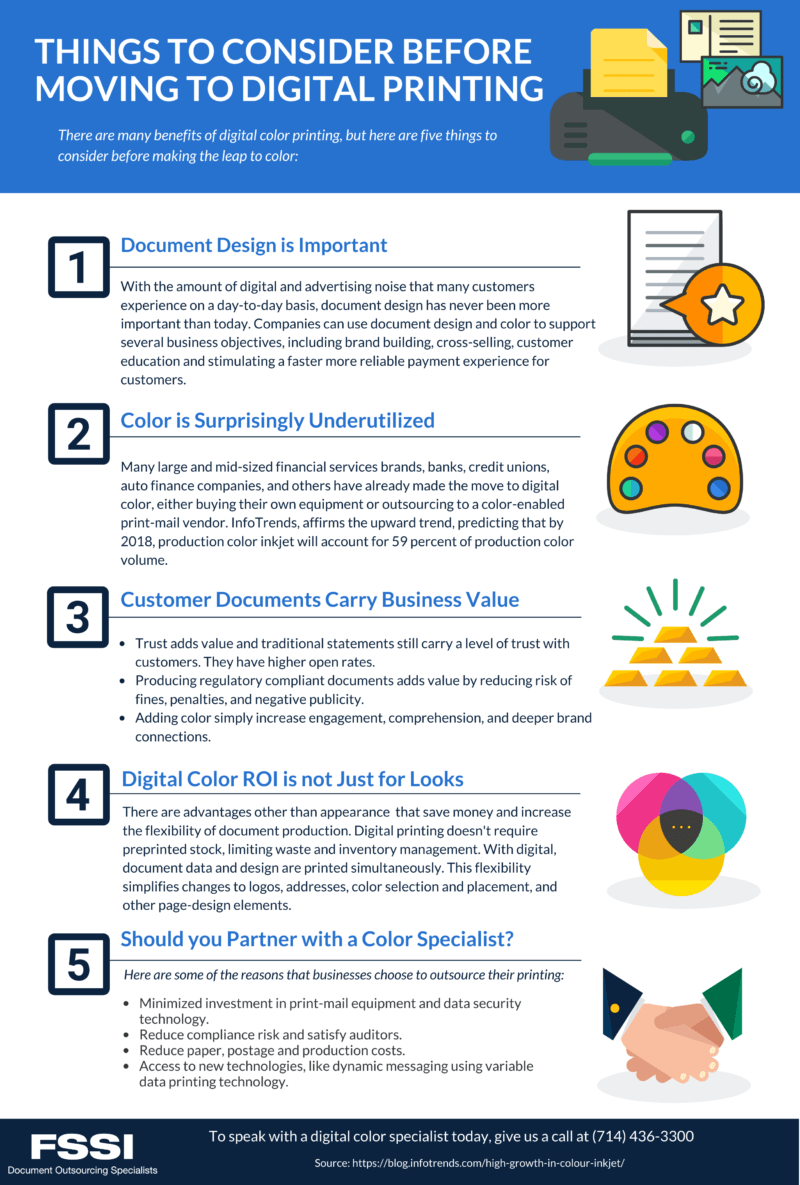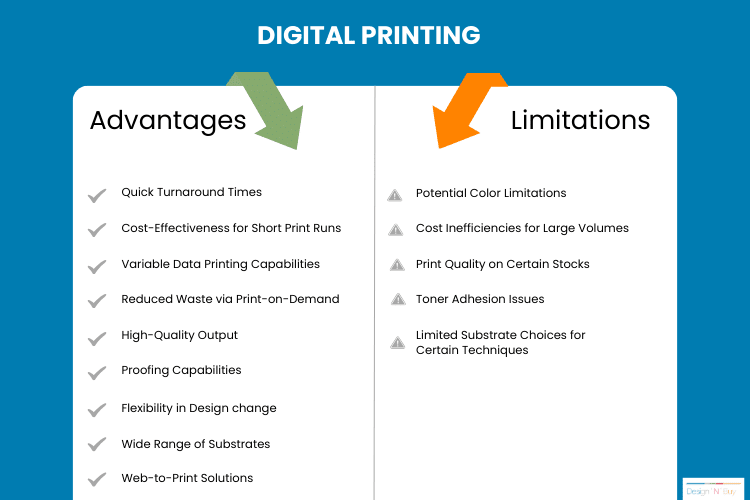Digital Printing Fundamentals Explained
Digital Printing Fundamentals Explained
Blog Article
The Ultimate Guide To Digital Printing
Table of ContentsThe smart Trick of Digital Printing That Nobody is DiscussingDigital Printing for BeginnersThe Greatest Guide To Digital PrintingSome Known Factual Statements About Digital Printing The Single Strategy To Use For Digital PrintingDigital Printing - An Overview
Variable information printing, such as straight mail with individualized codes and addresses, is ideally fit for electronic printing. Digital quick printing just needs 4 actions of design, review, printing and binding to obtain whatever done. Digital fast printing has an unparalleled benefit: print on demand.According to PMMI, electronic printing allows brand names and suppliers to react rapidly to consumer needs while boosting the supply chain, lowering warehousing expense and waste, and taking pleasure in faster time to market. That all sounds great, however just how does this modern technology do all that? The major differentiator of these modern technologies is that there are no set-up fees and no plates with electronic printing.
Not known Facts About Digital Printing
According to Wikipedia, the best difference between electronic printing and conventional methods such as lithography, flexography, gravure, or letterpress - Digital Printing is that there is no need to replace printing plates in electronic printing, whereas in these analog printing techniques home plates are repetitively replaced. This results in quicker turnaround time and decreases cost when making use of digital printing.
Digital printing is extremely flexible, so it's simple to make modifications to the bundle style swiftly. It all goes back to the plates.
A lot more inventory can mean even more waste in the future. With standard printing approaches, short-run printing is simply not feasible. Due to the fact that a terrific style can make or break your product, digital printing consistently creates top quality, clear and vivid graphics each time. Digital printing on adaptable bags includes the brilliant, dynamic, and accurate graphics that almost bid customers to connect and touch them.
Digital printing is the process of printing digital-based photos straight onto a range of media substratums. There is no need for a printing plate, unlike with offset printing. Digital documents such as PDFs or desktop publishing data can be sent straight to the digital printing machine to publish on paper, photo paper, canvas, textile, synthetics, cardstock and other substratums.
The Basic Principles Of Digital Printing
According to PMMI, electronic printing permits brands and suppliers to react promptly to customer needs while improving the supply chain, minimizing warehousing expense and waste, and delighting in faster time to market. That all noises fantastic, however just how does this innovation do all that? The significant differentiator of these technologies is that there are no set-up charges and no plates with electronic printing.
According to Wikipedia, the biggest difference between digital printing and traditional techniques such as lithography, flexography, gravure, or letterpress is that there is no requirement to replace printing plates in digital printing, whereas in these analog printing techniques home plates are continuously changed. This results in quicker turnaround time and reduces expense when making use of electronic printing.

An Unbiased View of Digital Printing
Much more stock can indicate even more waste in the future. With traditional printing methods, short-run printing is simply not feasible. Since a terrific style can make or damage your item, electronic printing constantly produces high-grade, clear and colorful graphics each time. Digital printing on flexible bags adds the bright, vivid, and precise graphics that practically bid customers to connect and touch them.

According to PMMI, digital printing enables brands and makers to respond rapidly to customer demands while enhancing the supply chain, decreasing warehousing expense and waste, and appreciating faster time to market. That all noises excellent, yet exactly how does this innovation do all that? The major differentiator of these technologies is that there are no set-up costs and no plates with electronic printing.
Digital Printing for Beginners
According to Wikipedia, the best difference between electronic printing and typical approaches such as lithography, flexography, gravure, or letterpress is that there is no demand to change printing plates in electronic printing, whereas in these analog printing methods the plates are repeatedly changed. This results in quicker turn-around time and lowers expense when using electronic printing.
Quick production implies getting your item to market quicker. It also indicates it's simpler and faster to make changes in the future, when you alter a recipe, add a SKU, or create seasonal product packaging. Digital printing is highly versatile, so it's very easy to make changes to the package style promptly. It all goes back to home plates.

The Ultimate Guide To Digital Printing
Digital printing is the procedure of printing digital-based images directly onto a over here variety of media substrates. There is no need for a printing plate, unlike with offset printing. Digital files such as PDFs or desktop publishing files can be sent straight to the electronic printing press to publish on paper, picture paper, canvas, fabric, synthetics, cardstock and various other substrates.
Report this page